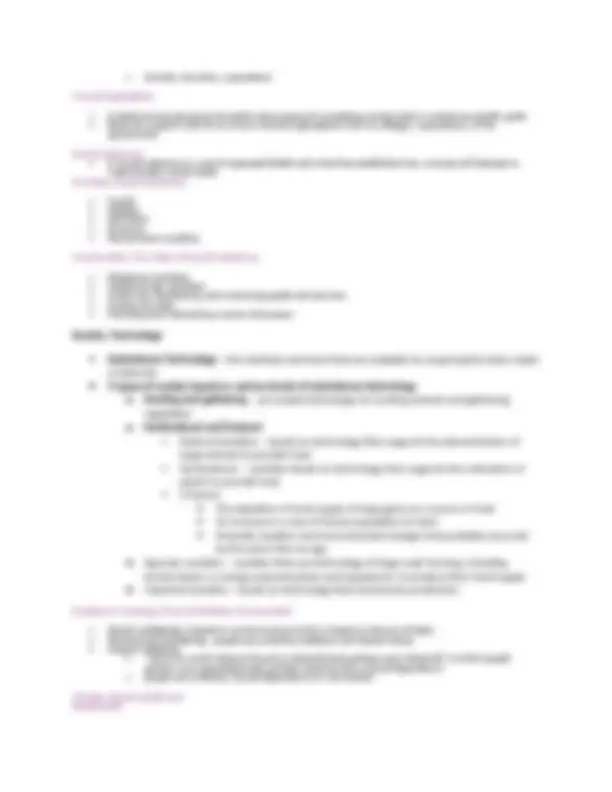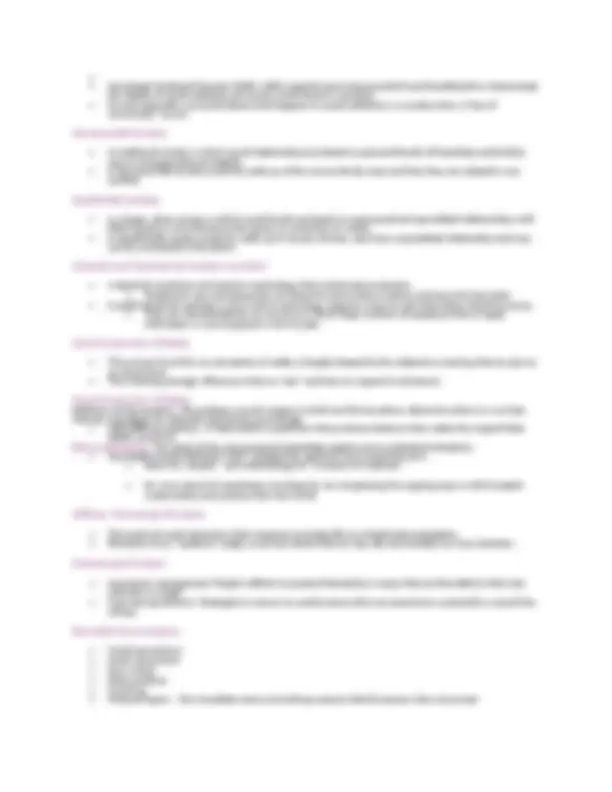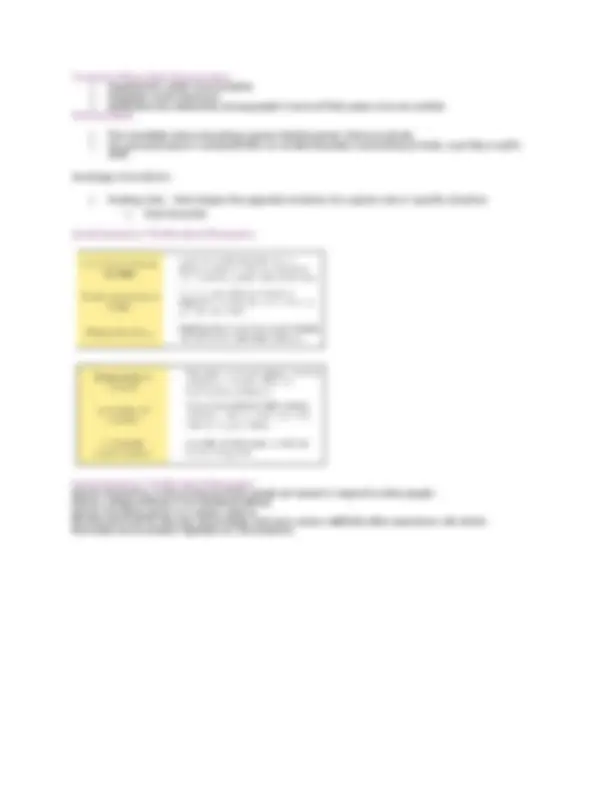





Study with the several resources on Docsity

Earn points by helping other students or get them with a premium plan


Prepare for your exams
Study with the several resources on Docsity

Earn points to download
Earn points by helping other students or get them with a premium plan
Community
Ask the community for help and clear up your study doubts
Discover the best universities in your country according to Docsity users
Free resources
Download our free guides on studying techniques, anxiety management strategies, and thesis advice from Docsity tutors
Sociology Kendall Chapter 4 Material Type: Notes; Professor: Guerra; Class: Principles Of Sociology; Subject: Sociology; University: University of Texas - Pan American;
Typology: Study notes
1 / 5

This page cannot be seen from the preview
Don't miss anything!




Chapter 4 Questions for You… Is there a structure regarding how society is organized? How do the large pieces of society fit together? What is the importance of understanding “social location” as it relates to a group’s overall placement in the social structure? What factors affect the process of social interaction? Chapter Outline Social Structure: The Macrolevel Perspective Components of Social Structure Societies: Changes in Social Structure Social Interaction: The Microlevel Perspective Changing Social Structure and Interaction in the Future Social Structure and Interaction Social structure is the framework of societal institutions (politics, and religion) and social practices (social roles) that make up a society and establish limits on behavior. Social interaction is the process by which people act toward or respond to other people and is the foundation for all relationships and groups in society. Social structure and framework o Homelessness According to data published by the Congressional Research Service Reports(2005), the number of homeless individuals in the United States ranges from 600,000-2.5 million people. Although single men constitute about sixty percent of the homeless population, families constitute about one third of all homeless and are the fastest-growing group of homeless. The homeless elderly will also be an important group as America ages in the next decades Who Are the Homeless? How Much Do You Know About Homeless Persons? True or False? Most homeless people choose to be homeless. False - Less than 6% of all homeless people are that way by choice. True or False? Homeless people do not work. False. Many homeless people are among the working poor. ;Minimum-wage jobs do not pay enough to support a family or pay inner-city rent. True or False? Most homeless people are mentally ill. False. Most homeless people are not mentally ill; estimates suggest that about 1/4 of the homeless are emotionally disturbed. Polling Question
People who are better off should help friends who are less well off. Strongly agree Agree somewhat Unsure Disagree somewhat Strongly disagree Social Structure Framework Components of Social Structure Status Roles Groups Social Institutions Status: A socially defined position in society characterized by certain expectations, rights, and duties. Status Ascribed status o Social position based on attributes over which the individual has little or no control, such as race/ethnicity, age, and gender. Achieved status o Social position that a person assumes as a result of personal choice, merit, or direct effort. Master status is the most important status that a person occupies. Status symbols are material signs that inform others of a person’s specific status. o Example: Wearing a wedding ring proclaims that a person is married. Polling Question If you could change one of the following in our society, which would you change? Prejudice Sweat shops Media censorship The speed limit The income distribution to be more equal Roles A set of behavioral expectations associated with a given status. Role Expectation: A group or society’s definition of the way a specific role ought to be played. Role Performance: How a person actually plays a role. Roles Role Conflict : Occurs when incompatible demands are placed on a person by two or more statuses held at the same time. Role Strain : Occurs when incompatible demands are built into a single status that the person holds.
Stages of Role Exit When people leave a role central to their identity: (ex. retirement) Doubt Search for alternatives - separation, leave of absence. The turning point - take an action. Social Groups A social group consists of two or more people who interact frequently and share a common identity and a feeling of interdependence. Primary groups – is a small less specialized group in which members engage in face to face, emotion based interactions over an extended period of time o Family, close friends, school or work-related peer groups Secondary – is a larger, more specialized group in which members engage in more impersonal, goal oriented relationships for a limited period of time
Sociologist Ferdinand Tönnies (1855– 1936) used the terms Gemeinschaft and Gesellschaft to characterize the degree of social solidarity and social control found in societies. He was especially concerned about what happens to social solidarity in a society when a “loss of community” occurs. Gemeinschaft Societies Is traditional society in which social relationships are based on personal bonds of friendship and kinship and on intergenerational stability A Gemeinschaft society would be made up of the various family trees and how they are related to one another. Gesellschaft Societies Is a large, urban society in which social bonds are based on impersonal and specialized relationships, with little long term commitment to the group or consensus on values A Gesellschaft society would be made up of clumps of trees, each has a specialized relationship and may not be committed to the others. Industrial and Postindustrial Societies (symbolic) Industrial societies are based on technology that mechanizes production. o People who are unemployed do not share the same status markers as those who have jobs. A postindustrial society is one in which technology supports a service and information based economy. o They are characterized by an economy in which large numbers of people provide or apply information or are employed in service jobs. Social Construction of Reality The process by which our perception of reality is largely shaped by the subjective meaning that we give to an experience. This meaning strongly influences what we “see” and how we respond to situations. Social Construction of Reality Definition of the situation - We analyze a social context in which we find ourselves, determine what is in our best interest, and adjust our attitudes and actions accordingly. Self-fulfilling prophecy - A false belief or prediction that produces behavior that makes the original false belief come true. Ethnomethodology: The study of the commonsense knowledge people use to understand situations. Sociologist Harold Garfinkel (1967) initiated this approach and coined the term: o ethno for “people” and methodology for “a system of methods.” o He was critical of mainstream sociology for not recognizing the ongoing ways in which people create reality and produce their own world. Goffman: Dramaturgical Analysis o The study of social interaction that compares everyday life to a theatrical presentation. o Members of our “audience” judge us and are aware that we may slip and reveafpl our true character. Dramaturgical Analysis o Impression management: People’s efforts to present themselves in ways that are favorable to their own interests or image. o Face-saving behavior: Strategies to rescue our performance when we experience a potential or actual loss of face. Nonverbal Communication o Facial expressions o Head movements o Eye contact o Body positions o Touching o Personal space - the immediate area surrounding a person that the person claim as private
Functions of Nonverbal Communication o Supplements verbal communication. o Regulates social interaction. o Establishes the relationship among people in terms of their power over one another. Personal Space o The immediate area surrounding a person that the person claims as private. o Our personal space is contained within an invisible boundary surrounding our body, much like a snail’s shell.
Social Interaction: The Microlevel Perspective Social Interaction: The Microlevel Perspective Social interaction is the process by which people act toward or respond to other people. Being a college professor is an achieved status. Being a homeless person is a master status. Women who work for less pay, less prestige, and more career roadblocks often experience role strain. Nonverbal communication regulates our conversations.